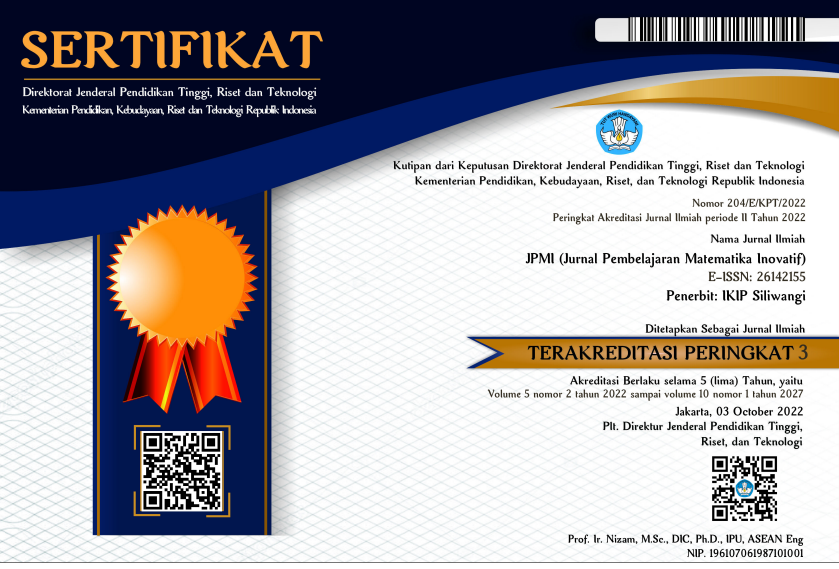KESIAPAN GURU MATEMATIKA DI KOTA YOGYAKARTA DALAM MELAKSANAKAN KURIKULUM 2013
DOI:
https://doi.org/10.22460/jpmi.v3i5.p483-490Keywords:
readiness, mathematics teacher, 2013 CurriculumAbstract
References
Creswell, J. W. (2009). Research design: qualitative, quantitative, and mixed methods approaches (3th edition). Sage.
Figueroa, L. L., Lim, S., & Lee, J. (2016). Annals of GIS investigating the relationship between school facilities and academic achievements through geographically weighted regression. Annals of GIS, 22(4), 273–285. https://doi.org/10.1080/19475683.2016.1231717
Howley, C. (2012). Readiness for change. icfi.com
Mackinlay, M. (2014). Teachers ’ response to curriculum reforms : primary (Issue February).
Mccoach, D. B., Gable, R. K., & Madura, J. P. (2013). Instrument development in the affective domain: school and corporate applications (3th editio). Springer.
Menteri Negara Pendayagunaan Aparatur Negara dan Reformasi Birokrasi Republik Indonesia, (2009).
Nepal, B. (2016). Relationship among school’s infrastructure facilities , learning environment and student’s outcome. International Journal for Research in Social Science and Humanities Research, 2(5), 44–57.
Omae, Siocha, N., Onderi, H., & Benard, M. (2017). Quality implications of learning infrastructure on performance in secondary education: a small scale study of a country in Kenya. European Journal of Education Studies, 3(4), 97–123. https://doi.org/10.5281/zenodo.344956
PeÅ¡ková, K., Spurná, M., & Knecht, P. (2019). Teachers ’ acceptance of curriculum reform in the Czech republic : one decade later sprejetje kurikularne prenove uÄiteljev na ÄŒeÅ¡kem : desetletje pozneje. 9, 73–97. https://doi.org/10.26529/cepsj.560
Rogers, E. M. (1983). Diffusion of innovations (3th editio). The Free Press A Division of Macmillan Publishing Co., Inc.
Ruhyana, N. F., & Aeni, A. N. (2019). Effect of educational facilities and infrastructure in primary schools on students ’ learning outcomes. 6(1), 43–54. https://doi.org/10.17509/mimbar-sd.v6i1.15225
Terhart, E. (2013). Teacher resistance against school reform : reflecting an inconvenient truth. School Leadership & Management, 33(5), 486–500. https://doi.org/10.1080/13632434.2013.793494
Wibowo, R., & Wutsqa, D. (2014). The evaluation of the implementation of KTSP of mathematics subject in SMP in yogyakarta city. Jurnal Riset Pendidikan Matematika, 1(1), 58–68. https://doi.org/https://doi.org/10.21831/jrpm.v1i1.2664

















